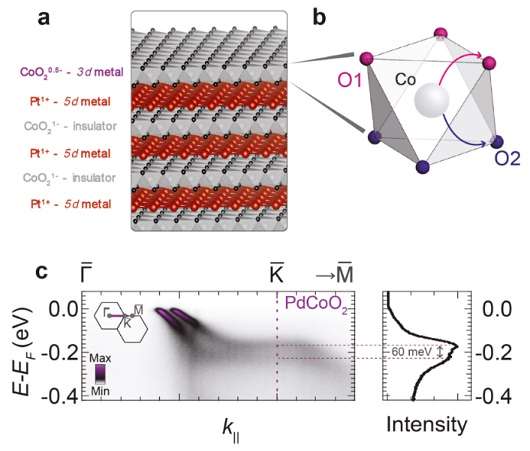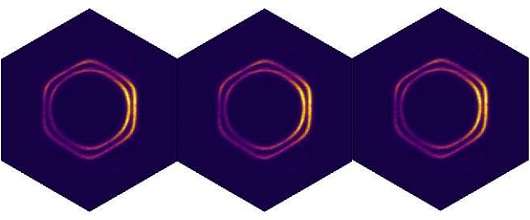Condensed matter physics research could revolutionise data transfer and storage

Research led by the University of St Andrews to develop a route to create surface states with a maximal energy difference between electrons with different spins could help design materials for use in new-generation electronic devices.
To be published tomorrow in Nature (28 September), researchers from the University of St Andrews and the Max Planck Institute for Chemical Physics of Solids in Dresden, in collaboration with beamline staff from Diamond Light Source and Elettra in Italy, described a new route to maximise the spin-splitting of surface states.
The surfaces of materials can host unique electronic properties, where the electrons behave very differently from the interior. In particular, the intrinsically broken symmetries of the surface compared with the bulk of the sample allows for a separation of energy states according to their spin. The spin splitting is at the heart of a number of proposed novel electronic devices, where both charge and spin of electrons can be used. This technology could lead to more efficient data transfer and storage. However, to make this development possible, it is necessary to first understand the underlying physics of spin-splitting, and in particular how to maximise the magnitude of the effect.
By considering the hierarchies of energy scales in the system, the research team identified that a maximal spin-splitting situation could be realised by first having a very large energy scale associated with the inversion symmetry breaking at the surface. They then measured the electronic structure of PtCoO2, PdCoO2 and PdRhO2, all belonging to the delafossite family of layered oxide materials, and found a significant spin-splitting, proving that this scenario can indeed be realised. Their result gives a useful principle for the design of new materials with interesting and potentially useful surfaces and interface states

Lead author Veronika Sunko at the University of St Andrews, said: "It's important to consider the energy hierarchies, and then to find a structure where there are naturally large energy scales associated with the inversion symmetry breaking at the surface."
More information: Veronika Sunko et al. Maximal Rashba-like spin splitting via kinetic-energy-coupled inversion-symmetry breaking, Nature (2017). DOI: 10.1038/nature23898
Journal information: Nature
Provided by University of St Andrews




















